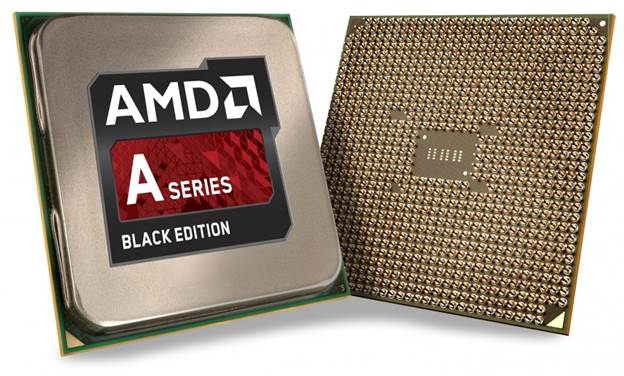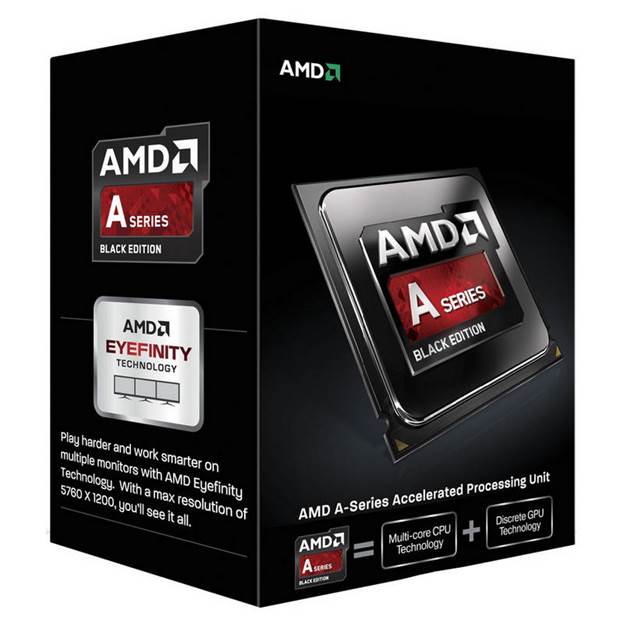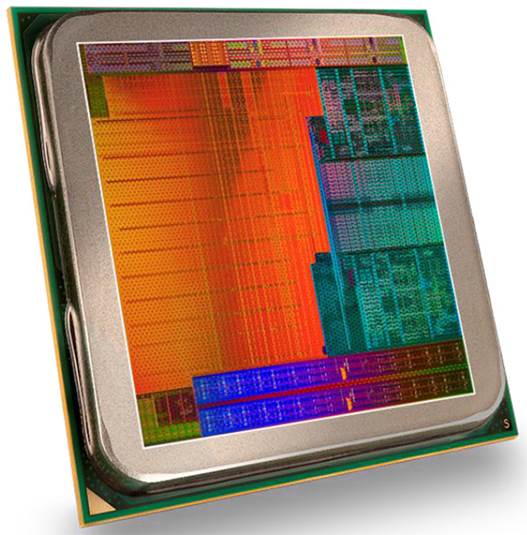Can AMD close the CPU gap?
If you’re expecting AMD’s new APU to blow Intel’s products
out of the water when looking at raw CPU performance, you’re going to be
disappointed. There are three new APUs on the way – the A8-7600K is due in a
few months, while the A10-7700K and A10-7850K are both ready now. Each features
a raft of major changes and improvements; unfortunately catching up to
similarly priced Intel chips in CPU-intensive tasks isn’t one of them. AMD has
instead focused on delivering a processor with a better balance between its two
halves, the CPU and integrated GPU. These chips, based on the design formerly
codenamed Kaveri, also update the GPU cores to the
same design first used in the Radeon HD 7XXX series, thus making them
compatible with Mantle. But the biggest change is arguably the use of a Heterogenous System Architecture, or HSA for short. Sadly
we probably won’t see why HSA is so important for at least a couple of years.
We’re going to look at the fastest of the new range, the A10-7850K, as it
offers the best possible game performance.

AMD A10-7850K
Sharing is caring
The CPU and GPU parts in today’s processors are treated as
separate devices; they might be mounted on the same piece of silicon, but they
can’t speak directly to each other.
Each requires its own unique pool of memory, so when the two
need to work on a piece of data, it is copied back and forth between the two.
The introduction of HSA changes all that, finally allowing both the CPU and GPU
to access the same space in memory. In technology terms, it is a “big deal”, as it should have an exponential impact on performance
during tasks involving both halves of the processor, such as gaming. There’s a
catch though – isn’t there always? – as it requires
new software to make the most of HSA’s strengths. It’s likely to be several
years at least before HSA is the norm in software design, by which stage Intel
should also support this forward-looking feature.
The introduction of HSA isn’t the only new thing about Kaveri. These new chips are also being built on a new
process, shrinking from the existing 32nm process down to a new 28nm process.
This allows AMD to squeeze more transistors into the processor, but it comes at
the price of frequency, with the new Kaveri
processors built around slower x86 cores than the prior generation. The
A10-7850K has four x86 cores with a base frequency of 3.7GHz that boost up to
4GHz under load, 10% slower than the previous A10- 6800K which maxed out at
4.4GHz. Obviously AMD had to do something to counteract this drop in
performance.

The box's appearance
Introducing Steamroller, the name of the improved CPU
architecture used in the Kaveri family. AMD claims
that this increases the Instructions Per Cycle, or
IPC, of the x86 cores by up to 20% compared to the past design, Piledriver. Sadly it appears to be aptly named as, even
with the 20% performance increase, it lags well behind Intel’s raw x86 performance.
Thankfully the integrated GPU performance is much more
impressive. While the last generation of APU was limited to a maximum of 384 shaders, the new design tops out at 512, as seen in the
high-end A10-7850K.
Each shader is also more powerful
thanks to the GCN design. As a result, the new APU should offer the best
integrated gaming performance yet seen, with AMD aiming to deliver 30 frames
per second at 1080p resolution in today’s PC games.
There are a raft of other new features, such as the
inclusion of AMD’s new TrueAudio DSP, an upgraded
Video Coding Engine and Unified Video Decoder, but we don’t have room to delve
into all of the other details.
Instead we’re going to finish the architectural discussion
with mention of Kaveri’s power saving features.
Despite launching on the desktop, AMD intends this to be a mobile APU, and has
included the ability for system builders to change the TDP of some of these
chips. The A8-7600 can be set to either 45W or 65W, depending on the type of
system it’s going into, with the frequency of the chip scaling between the two.
Note that all of the Kaveri CPUs reside in the new
FM2+ socket design, which has two more pins than the FM2 design. This means the
new APUs can’t fit into the older FM2 socketed boards, but the older FM2 APUs
can fit into the new FM2+ socketed boards. Geddit
Good. Now let’s see how AMD’s latest and greatest performs.
The numbers don’t lie
Our first two benchmarks focus exclusively on the x86
performance of the A10-7850K, an area that AMD admits isn’t its strength. Both
tests showed that Intel’s popular i7 4770K processor delivered up to twice the
raw x86 performance of the A10-7850K. The third test, PCMark,
uses both sides of the processor to measure overall performance, and it was
here that we saw the A10-7850K start to stretch its wings, performing just
below the speed of the 4770K. It was only when we focused exclusively on
integrated GPU performance that we could see the strength of the new GCN cores
in the APU, with the A10-7850K offering almost double the performance of
Intel’s chip in both Tomb Raider and Dirt 3.

AMD A10-7850K
It’s a real shame that AMD hasn’t managed to close the gap
when it comes to x86 performance, but we think it’s going to take an entirely
new CPU design for that to ever happen; Steamroller is yet another refinement
of the CPU design AMD has been using for years, and it’s simply not up to snuff.
Accordingly, if you’re going to be playing with a discrete
GPU and favour games that need good CPU performance,
such as simulators, open world games or strategy titles, the A10-7850K is not
the APU you’re looking for.
However, if you want to build a small HTPC with decent
integrated graphics performance, the new A10-7850K is the chip to beat.
Provided you don’t mind dropping some of the detail levels, you should be able
to maintain the 1080p at 30fps goal that AMD had in mind, well in excess of anything
Intel has to offer. As PCPP readers you’re not likely to use the A10-7850K in
your primary game system, but if you need to build a super cheap casual machine
for your gran or little sister, AMD’s new APU could be just the product you
need.